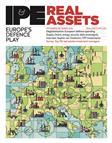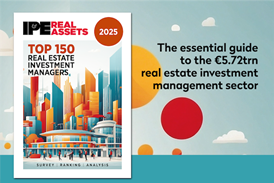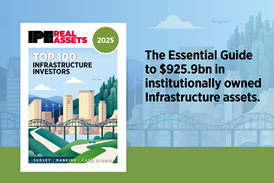Mid-market infrastructure debt offers institutional investors robust, stable returns and direct funding opportunities in clean energy, transport and digital infrastructure, writes Simon Jardine
One of the most significant investment trends today is the rising demand for private credit in infrastructure financing. Infrastructure assets are widely considered to provide the backbone of the global economy – moving people, goods, commodities, and data where they are needed most – and are likely to be essential to achieving global net-zero ambitions.

The IEA estimates that over the next 20 to 25 years, more than $150trn (€133.5trn) will be required to fund infrastructure projects critical to this transition.
Infrastructure assets also span a wide spectrum, from waste disposal facilities and offshore renewable-energy developments to data centres, schools, hospitals, roads, airports, and water utilities. As traditional lending scales back in this space, private credit is stepping in to fill the gap.
Within this context, infrastructure debt, particularly in the mid-market segment, is offering institutional investors the chance to generate robust, stable returns while directly funding projects in clean energy, transport, and digital infrastructure.
Far from concerns about market saturation, the appetite for private credit remains strong – investors who have yet to allocate capital to private credit are increasingly considering it, while existing investors look to expand their exposure.
Mid-market appeal: where financing meets opportunity
Large-scale infrastructure projects often attract financing from major institutions, but in our view, the mid-market – total financings of $50-250m – remains largely underserved. Mid-market issuers often lack deep-pocketed shareholders, making external financing essential.
Renewable-energy developers are a prime example. These businesses face significant up-front costs when securing land, obtaining permits, and constructing clean-energy assets. Traditional banks often won’t finance such businesses and public markets are unsuitable, leaving a gap that private institutional investors can fill.
Projects that accelerate decarbonisation, whether through renewable-energy production, energy-efficiency enhancements, or reducing emissions from carbon-intensive industries, are also regularly featuring in infrastructure debt strategies.
Many mid-market projects do not yet meet traditional investment-grade criteria, but offer solid fundamentals and return potential – which can make them suitable for investors with appropriate risk appetite. Unlike in public debt markets, the lower transparency of private credit often raises concerns around the risks of corporate leverage.
These concerns should not be ignored. But the ability to meet borrowers’ unique requirements – across structures – can make the asset class essential to help fill funding gaps.
Tailwinds driving investment
A shifting investor landscape and changing macroeconomic climate are two themes boosting the appeal of infrastructure debt.
Once dominated by insurance companies seeking long-term, investment-grade assets, infrastructure debt is now attracting pension funds, family offices, and investors seeking higher-yield, shorter-duration opportunities. Many investors have heavily allocated to direct lending in recent years and are now looking to diversify. Infrastructure debt offers a potentially lower-risk alternative to direct lending while still offering attractive returns versus public markets.
Meanwhile, rising interest rates have made yield-generating assets more attractive, positioning infrastructure debt as a compelling alternative to certain other alternative strategies, including infrastructure equity. The fundamental drivers of renewable energy investment – cost efficiency and energy security – remain strong despite political uncertainties.
The energy transition is now increasingly market-driven, making it resilient to policy shifts and reinforcing the sector’s long-term investment viability.
The road ahead
The mid-market infrastructure debt opportunity is growing, and institutional investors globally are taking notice. By focusing on transition-aligned projects, investors can achieve competitive financial returns while supporting the global push for decarbonisation.
With evolving investor preferences, deepening market sophistication, and strong macroeconomic support, we believe infrastructure debt is expected to become a cornerstone of alternative investment portfolios.
As private credit continues to evolve, its integration into infrastructure debt highlights its broader potential. The synergy between private credit and infrastructure financing is reshaping how institutional investors approach alternative assets.
By providing flexible, targeted financing solutions, private credit is not just filling gaps left by traditional lenders – in our view, it is defining a new era of capital markets.
To read the latest IPE Real Assets magazine click here.


















